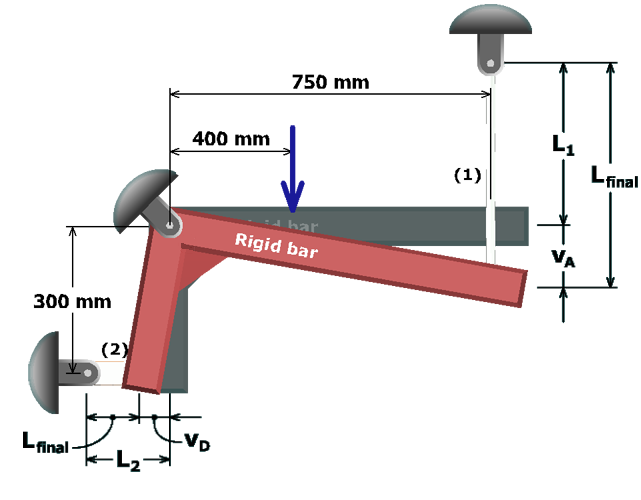
The deformation in rod can be determined by considering the initial and final lengths of the axial member.
Based on this sketch of the assumed deflected position of the rigid bar, the initial length of rod is:
and the length after deformation is:
Therefore, the elongation of rod can be written as: